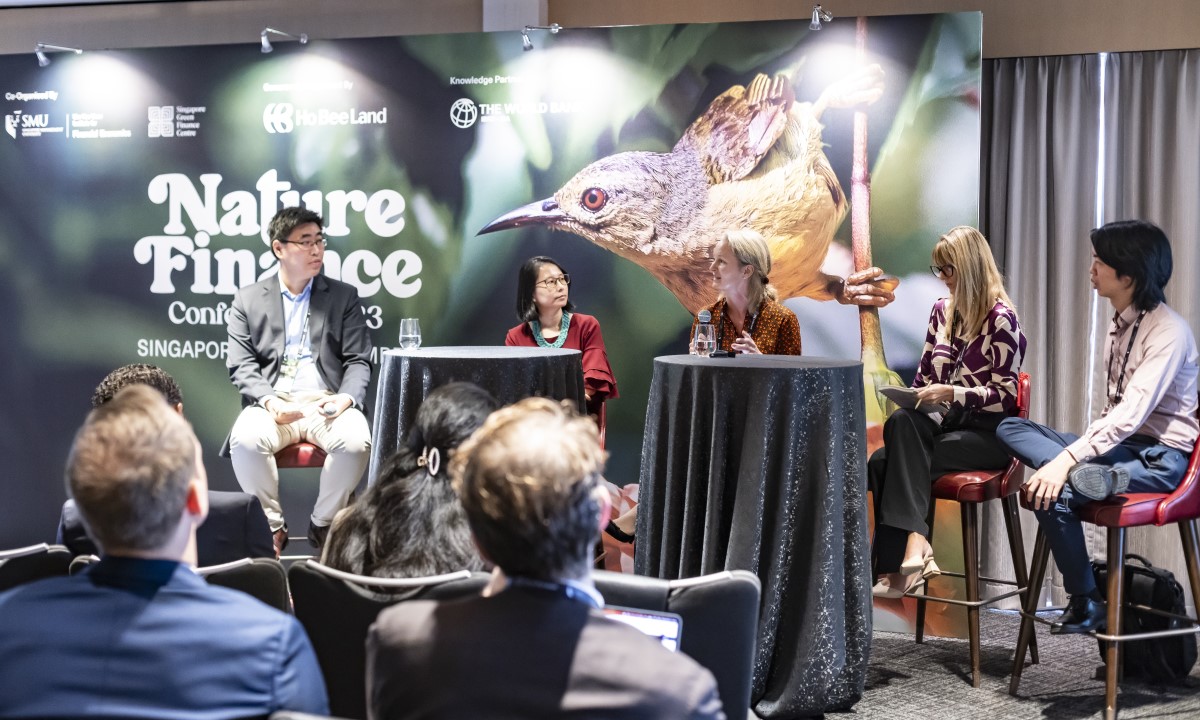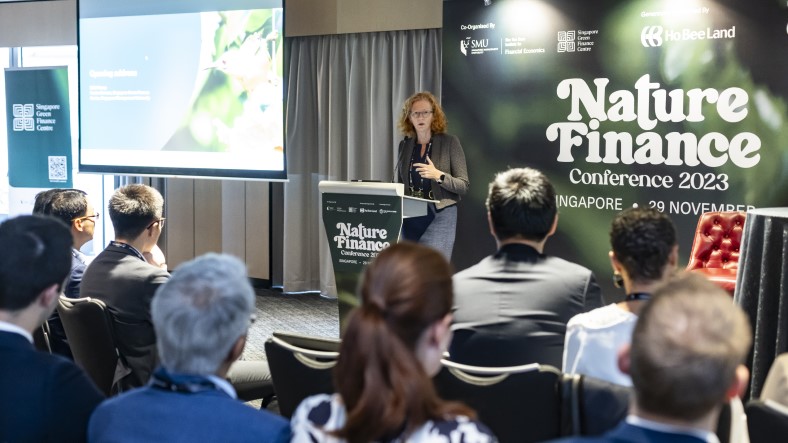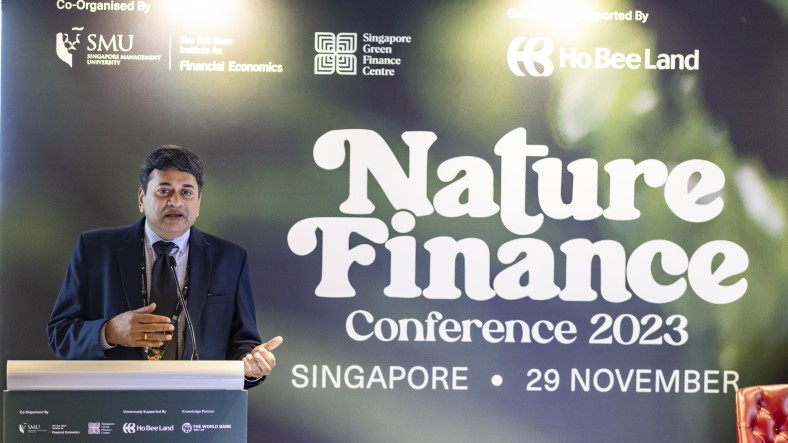
Finance plays a critical role in supporting nature and biodiversity. In fact, according to a news report by the World Economic Forum back in 2020, around US$44 trillion (about SG$58.6) of economic value generation – more than half of the world’s total GDP – was found to be moderately or highly dependent on nature.
It therefore makes sense that governments, organisations, and financial institutions are increasingly recognising the need to account for nature in their strategies and capital allocation decisions.
Hoping to spark discussions on the emerging topic of nature and biodiversity finance in the region, the Nature Finance Conference was held on 29 November 2023. The event also enfolded the 13th Annual Sim Kee Boon Institute for Financial Economics (SKBI) Conference, and the second Singapore Green Finance Centre (SGFC) Conference.
To gather insights and best practices for nature finance and nature-based solutions, the conference featured 20 expert speakers from policy, industry, and academia, attracting over 100 conference delegates.
In her opening address at the conference, Nikki Kemp, the Centre Director of SGFC highlighted that biodiversity loss and species extinction are happening at an alarming rate. “This poses risks to ecosystems that we depend on for food, water and climate regulation.”

“Nature and natural capital are undervalued in current economic and political decisions,” she continued, emphasising that Asia Pacific in particular has an imperative to address this due to its rich biodiversity, and expressing her hopes that the conference would open discussions of nature finance to address the issue.
Examining various aspects of nature
Some of the themes of the discussions during the conference including the funding gap in biodiversity conservation, as well as the role of markets, regulations, public and private funding, challenges, collaboration, and innovative solutions.
“Despite the calls to unlock investments for conservation, restoration and sustainable use of green and blue biodiversity through financing green initiatives, harnessing private finance is difficult due to myriad factors,” said Mr Muthukumara S Mani, Lead Environmental and Climate Change Economist at The World Bank in his keynote speech at the conference.

One such constraint is the lack of incentives that encourage conservation instead of the expansion of economic activity, the paucity of standards to measure progress in this field, the lack of corporate reporting requirements on biodiversity risks, and the highly localised nature of biodiversity projects.
Throughout the day, the conference covered a wide range of topics related to the assessment of risks, disclosure recommendations and innovative solutions. They included a supervisory framework for assessing nature-related financial risks presented by the Organisation for Economic Co-operation and Development (OECD); as well as The Taskforce on Nature-related Financial Disclosures (TNFD) recommendations.
The market as a key, but not only, player
One of the panel discussions held during the conference was titled “Can the market save nature?” The session was moderated by Hao Liang, Associate Professor of Finance at SMU’s Lee Kong Chian Business School, and Co-Director of SGFC. He is also the holder of the Ho Bee Professorship in Sustainability Management.
On the panel was Ms Lim Bey An, Head, Capabilities, Enablers and Futures, within the sustainability group at the Monetary Authority of Singapore ; Dr Pernille Holtedahl, Research Fellow, Centre for Climate Finance and Investment , Imperial College Business School; Ms Kristina Anguelova, Head of Asia Sustainable Finance, World Wide Fund for Nature ; and Mr Mervyn Tang, Head of Sustainability, Asia Pacific at Schroders Singapore, which is one of the founding partners of the SGFC.
During the discussion, the panellists debated if human finance markets could save nature. One of the perspectives that was shared by many on the panel was that markets and private finance had an important role to play but would not be able to solve the biodiversity crisis alone.
Mr Tang, in his perspective as an asset manager, said it is vital to look also at the biodiversity impact of a portfolio rather than just how is affected by biodiversity risks.
“There are going to be solutions for regenerative agriculture, water, sanitation and so on, and it is about building a framework to invest in these opportunities,” he said. But more data needs to be available, the panellists agreed.
Another point raised during the discussion was the fact that nature is a complex system of interdependencies, making it difficult to isolate by sectors or issues.
“So, can ‘the market’ save nature? In the long run, yes. In the short run, there is a lot of resource capital misallocation, and it is our role to help put them in the right place,” said Prof Liang as he concluded the first panel.
“There is a big gap between research and industry practice in the area of nature finance, which is to a large extent due to lack of high-quality data. Hopefully, through this conference, researchers and practitioners in this field could work more closely to address some important questions in this space.”
Summing up, SGFC Centre Director Nikki Kemp also said, “The Nature Finance Conference is an example of how the Centre can tackle some of the most intractable issues for sustainable finance in Asia. It’s the tip of the iceberg on this topic with further extensive research planned for 2024.”


